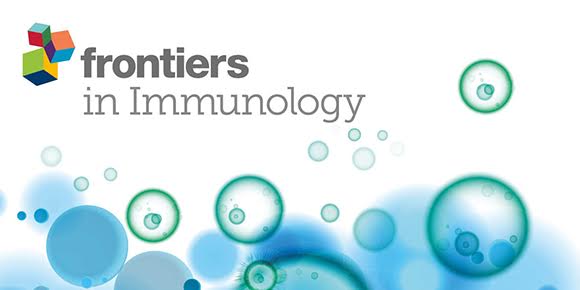 “Heavy cannabis users had decreased frequencies of human leukocyte antigen (HLA)-DR+CD38+CD4+ and CD8+ T-cell frequencies, compared to frequencies of these cells in non-cannabis-using individuals.
“Heavy cannabis users had decreased frequencies of human leukocyte antigen (HLA)-DR+CD38+CD4+ and CD8+ T-cell frequencies, compared to frequencies of these cells in non-cannabis-using individuals.
Heavy cannabis users had decreased frequencies of intermediate and nonclassical monocyte subsets, as well as decreased frequencies of interleukin 23- and tumor necrosis factor-α-producing antigen-presenting cells.
CONCLUSIONS:
While the clinical implications are unclear, our findings suggest that cannabis use is associated with a potentially beneficial reduction in systemic inflammation and immune activation in the context of antiretroviral-treated HIV infection.”
https://www.ncbi.nlm.nih.gov/pubmed/29471387
“We found that heavy cannabis use was associated with decreased frequencies of activated T cells and inflammatory antigen-presenting cell (APC) subsets, suggesting a potential immunologic benefit of cannabinoids through decreased immune activation in HIV-infected individuals.
In summary, our work demonstrates that heavy cannabis use is associated with lower markers of inflammation and immune activation in HIV-infected, ART-treated individuals.
These findings have clinical implications, as cannabinoids may have an immunological benefit and nonpsychoactive cannabis derivatives could be investigated as novel therapeutics to be used in conjunction with ART to aid in reduction of persistent inflammation.”
https://academic.oup.com/cid/article/66/12/1872/4869752
“Cannabinoids for the treatment of inflammation.” http://www.ncbi.nlm.nih.gov/pubmed/17520866

 “Thanks to the success of modern antiretroviral therapy (ART), people living with HIV (PLWH) have life expectancies which approach that of persons in the general population. However, despite the ability of ART to suppress viral replication, PLWH have high levels of chronic systemic inflammation which drives the development of comorbidities such as cardiovascular disease, diabetes and non-AIDS associated malignancies.
“Thanks to the success of modern antiretroviral therapy (ART), people living with HIV (PLWH) have life expectancies which approach that of persons in the general population. However, despite the ability of ART to suppress viral replication, PLWH have high levels of chronic systemic inflammation which drives the development of comorbidities such as cardiovascular disease, diabetes and non-AIDS associated malignancies. “Mortality among individuals co-infected with HIV and hepatitis C virus (HCV) is relatively high. We evaluated the association between psychoactive substance use and both HCV and non-HCV mortality in HIV/HCV co-infected patients in France, using Fine and Gray’s competing-risk model adjusted for socio-demographic, clinical predictors and confounding factors, while accounting for competing causes of death. Over a 5-year median follow-up period, 77 deaths occurred among 1028 patients.
“Mortality among individuals co-infected with HIV and hepatitis C virus (HCV) is relatively high. We evaluated the association between psychoactive substance use and both HCV and non-HCV mortality in HIV/HCV co-infected patients in France, using Fine and Gray’s competing-risk model adjusted for socio-demographic, clinical predictors and confounding factors, while accounting for competing causes of death. Over a 5-year median follow-up period, 77 deaths occurred among 1028 patients.



 “New neurons are continuously produced by neural stem cells (NSCs) within the adult hippocampus. Numerous diseases, including major depressive disorder and HIV-1 associated neurocognitive disorder, are associated with decreased rates of adult neurogenesis. A hallmark of these conditions is a chronic release of neuroinflammatory mediators by activated resident glia.
Recent studies have shown a neuroprotective role on NSCs of cannabinoid receptor activation. Yet, little is known about the effects of GPR55, a candidate cannabinoid receptor, activation on reductions of neurogenesis in response to inflammatory insult.
In the present study, we examined NSCs exposed to IL-1β in vitro to assess inflammation-caused effects on NSC differentiation and the ability of GPR55 agonists to attenuate NSC injury.
Taken together, these results suggest a neuroprotective role of GPR55 activation on NSCs in vitro and in vivo and that GPR55 provides a novel therapeutic target against negative regulation of hippocampal neurogenesis by inflammatory insult.”
“New neurons are continuously produced by neural stem cells (NSCs) within the adult hippocampus. Numerous diseases, including major depressive disorder and HIV-1 associated neurocognitive disorder, are associated with decreased rates of adult neurogenesis. A hallmark of these conditions is a chronic release of neuroinflammatory mediators by activated resident glia.
Recent studies have shown a neuroprotective role on NSCs of cannabinoid receptor activation. Yet, little is known about the effects of GPR55, a candidate cannabinoid receptor, activation on reductions of neurogenesis in response to inflammatory insult.
In the present study, we examined NSCs exposed to IL-1β in vitro to assess inflammation-caused effects on NSC differentiation and the ability of GPR55 agonists to attenuate NSC injury.
Taken together, these results suggest a neuroprotective role of GPR55 activation on NSCs in vitro and in vivo and that GPR55 provides a novel therapeutic target against negative regulation of hippocampal neurogenesis by inflammatory insult.”
 “HIV patients routinely use medicinal cannabinoids to treat neuropathic pain, anxiety, and HIV-associated wasting. However, Δ 9 -Tetrahydrocannabinol (THC), the primary psychoactive cannabinoid in
“HIV patients routinely use medicinal cannabinoids to treat neuropathic pain, anxiety, and HIV-associated wasting. However, Δ 9 -Tetrahydrocannabinol (THC), the primary psychoactive cannabinoid in